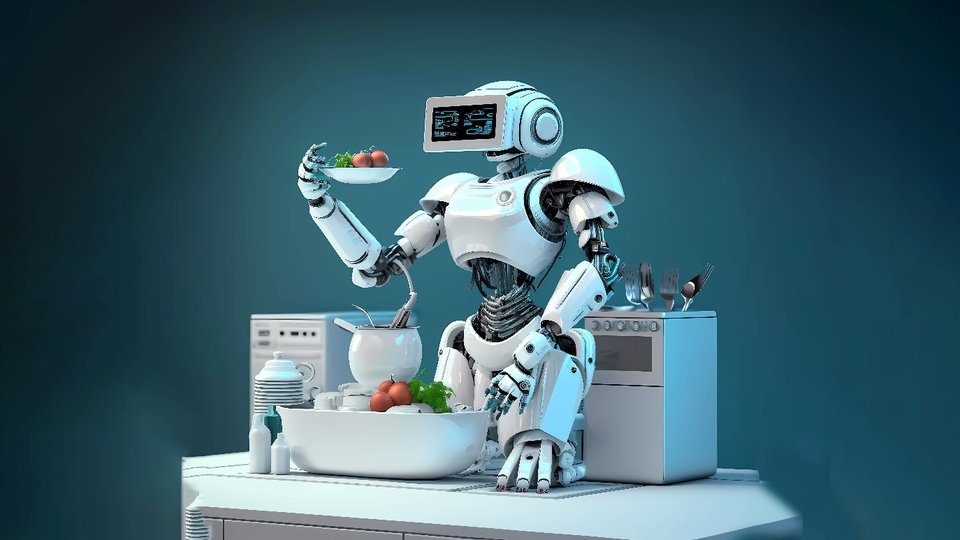Commentary
How AI-powered technology will reinvent food safety
Food safety remains a major issue for the foodservice industry. Here's how AI used in other industries can help foodservice operators reduce issues.

October 2, 2023 by Jete Nelke — Head of Marketing, FoodDocs
(Editor's note: An earlier version of this article ran on QSRWeb.com, a Vending Times sister publication.)
The commercial foodservice industry is notably one of the more diverse sectors of the food industry; it employs over 6 million people globally, and rakes in nearly $800 billion in revenue per year. However, it is important to realize that as the business is a labor-heavy industry, there is a high margin of human error involved.
The answer to high rates of human error is the introduction of artificial intelligence into the food industry, such as analytical AI, machine vision and vision AI amongst others.
Machine vision
With the onset of globalization, more and more consumers are demanding higher standards of quality in their food products. Unfortunately, one of the drawbacks of quality control is the reality that most measures are taken care of manually, which results in quality control parameters being subject to human error. Thus, a solution to this age-old predicament is the implementation of AI machine vision in the food manufacturing, retail and catering industries.
Quality control parameters for high-risk products, such as trace contamination of ready-to-eat foods and allergen-containing products, presence of physical hazards and potential chemical hazard detection can be done through artificial intelligence with consistency and high accuracy.
For example, in fish and fish product industries, bone detection can be done through the use of machine vision rather than depending on human eyes. This can also be extended to the packaging industry, where machine vision will be able to detect errors in manufacturing/expiration dates and times, and whether they are visible.
Vision AI
With the onset of the pandemic, the world has had to move business operations to remote platforms; this is also true of the food industry. A significant drawback to the movement towards remote operations has been the sudden lack of on-the-job training usually received by food workers.
So how do managers ensure their staff is engaged and aware of new food safety protocols? The answer to this is vision artificial intelligence, which is a tool being used for hands-on virtual food safety training. With vision AI, VR models can be created which are capable of simulating scenarios where food safety issues occur, and food workers are able to identify and fix these problems in real time. This ensures that food workers are engaged and up to date with the latest food safety regulations in their respective areas.
Interactive AI
One of the more exciting aspects of the rise of AI in the food industry are virtual food safety assistants. These interactive AI models are able to assist food safety professionals with tasks such as creating root cause analyses, process monitoring and even initiating product recalls. These food safety systems are even capable of lightning-fast data collation from other parts of a facility, which enables quick and efficient product recalls when necessary.
The use of these food safety assistants is on the rise in facilities where HACCP plans are in place; in fact, they are capable of creating HACCP plans and initiating alterations to a HACCP plan (if deemed necessary) within a fraction of the time usually required.
Analytical AI
One of the key components of an effective food safety system is the prediction of food safety risks in any given scenario, and subsequent solutions to these potential risks. An important aspect of AI that has come into the forefront in recent years is analytical artificial intelligence, which aims to make these risk predictions more accurate and consistent. For example, using analytical AI, food safety professionals will be able to predict the likelihood of environmental contamination by analyzing large data sets to predict the original source of contamination.
Similarly, AAI will also be able to predict the next big food safety risk by analyzing vast numbers of customer complaints; this will enable food safety professionals to put in preventive measures in place for the same. This can also be extended to predicting customer satisfaction trends, service improvement guidelines and customer grievance solutions.
Although the human touch is an important aspect of the restaurant business, AI can be used to eliminate the factor of human error from aspects of the hospitality business where necessary, potentially saving foodservice operators millions of dollars of business.
The application of AI is predicted to explode in the next two decades, and foodservice operators need to implement improving AI technologies in order to step up to the plate and ensure business continuity in the next few years.


